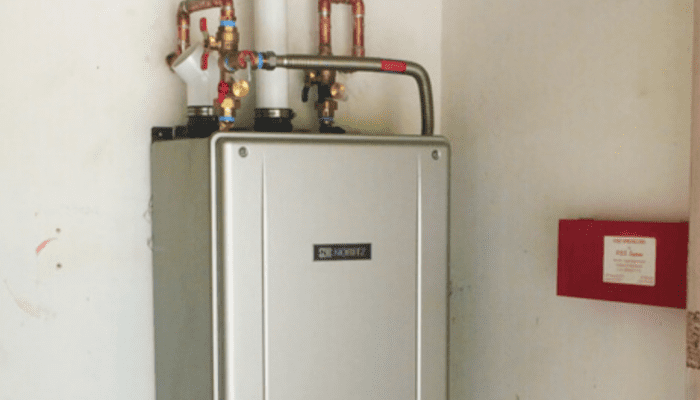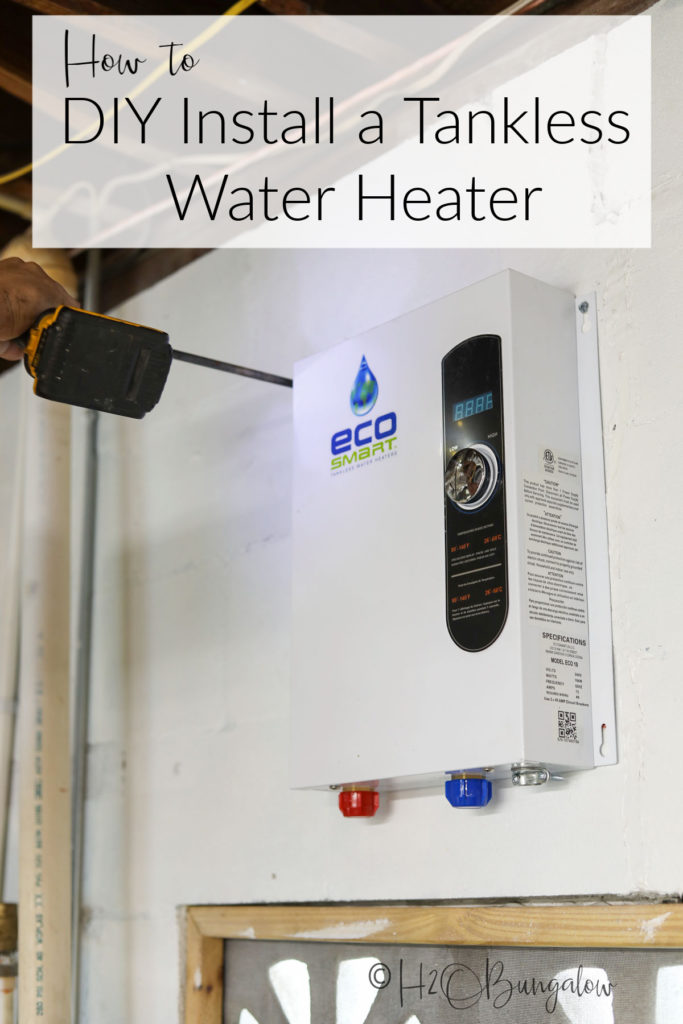All Categories
Featured
Table of Contents
- – Electric Tankless Water Heater Installers Berna...
- – Black Mountain Plumbing
- – Water Heater Maintenance Bernardo Village, CA
- – Tankless Water Heater Repairs Bernardo Village...
- – Hot Water Heater Repair Bernardo Village, CA
- – Water Heater Maintenance Bernardo Village, CA
- – Water Heater Repair Near Me Bernardo Village...
- – Black Mountain Plumbing
Electric Tankless Water Heater Installers Bernardo Village, CA
Black Mountain Plumbing
9909 Hibert Street Suite E San Diego, CA 92131(858) 536-4161
Black Mountain Plumbing
I asked them, if the set up hands-on calls for 36" of copper tubing on both sides, why are you trying to offer me 16" of plastic tubes? I said it's plastic inside that, the guy claimed that's what makes it as "strong" as steel, since it's protected by metal it can endure pressure like steel pipes - Bernardo Village Water Heater Repair.
"I have a 3/4" chilly supply at the wall surface and a 1/2" warm entering into the wall surface. Should I use a 3/4" shutoff valve, after that reduce it to 1/2" simply prior to the inlet to the heater, or should I decrease it to 1/2" and simply utilize a 1/2" shutoff? Is there a difference ... I guess if I ever go back to a tanked heating unit and it takes a 3/4" link I can keep the 3/4" shutoff would be the only advantage? I wish to mount a PRV coming out of the heating unit.
Water Heater Maintenance Bernardo Village, CA
NCLX-5LX Temperature and Stress Alleviation Valve Author: hj (AZ) Theoretically, a storage tank less heater need to not require a termperature safety valve because if it is working appropriately the circulation maintains the temperature level under control. THe personnel words naturally are "IF", and "functioning properly". Many tankless come with a pressure alleviation shutoff.
Oh, exists some kind of requirement, common height to install a tankless heating unit? I am thinking to install it shut to the electric joint box where the 60amp line comes in, at shoulder height - for no various other factor then it's easier to solution ... however exists some sort of guideline to install it greater or reduced? It is in an utility area.
Author: amount (FL) In that instance possibly just regarding shoulder elevation would certainly be optimal for solution. The only consideration would be where I might set up racks or utility room cupboards in the future would not want the device to be in the method. Author: bernabeu (SC) An adjustable regulator or alleviation IS NOT a safety and security safety valve.
Tankless Water Heater Repairs Bernardo Village, CA
I asked Rheem technology support if they have one they recommend keeping that tankless heater, they claimed one is NOT required. I browsed and saw that some do place in a pressure alleviation shutoff, however my understanding is the valve should be in concert with the piping in terms of the PSI.
Naturally it is. The adjustment is so you can establish it at the optimal maximum stress. Author: bernabeu (SC) I am making a difference in between: a pressure REGUALATING relief valve which alleviates unwanted functional stress and a 'pop' safety and security safety valve which alleviates DANGEROUS extreme pressure============================================== Author: hj (AZ) Hazardous "too much stress" is just a very high "unwanted operating pressure".

Plbg.com has no control over exterior web content that might be connected to from messages published below. Plbg.com is strictly for the exchange of plumbing related advice and NOT to ask about pricing/costs, nor where to discover an item (try Google), nor just how to operate or promote a company, nor for principles (legislation) and the like questions.
We are specifically for plumbing questions. Look for plumbing parts on our sponsor's site: Special thanks to our enroller:.
Hot Water Heater Repair Bernardo Village, CA
Allow's walk through the whole process of successfully installing a tankless water heating system in your home, from begin to finish., it's essential to make certain that both the power and water supply are entirely turned off.
To shut off the power, simply flip the breaker that controls your hot water heater. For the water, shut off the shutoff located on the cold water line introducing your existing hot water heater. Once you have actually securely switched off both the power and the water supply, the next step is to drain and disconnect your old water heating unit.
Water Heater Maintenance Bernardo Village, CA
Direct the other end of the pipe to a drain or an outside area where the water can securely be discharged. After the old storage tank is fully drained pipes, you'll require to separate it from the water supply lines and the power resource.
In the situation of an electric hot water heater, double-check that the power is completely shut down at the breaker prior to detaching any kind of electrical lines. Removing the front cover of your brand-new tankless hot water heater is a required action to access the internal components for installment. Most designs will have screws around the perimeter of the cover, which can be gotten rid of utilizing a screwdriver.
Make certain to position the cover in a safe place to avoid any type of damage. This action supplies accessibility to the placing braces, electrical links, and water inlets and outlets, which are important for the next steps of the setup process. Keep in mind to take care of the cover and all components of the hot water heater with care to avoid any type of unintentional damage.
It is essential to select a location that not only sustains the weight of the unit but additionally adheres to any installation codes and demands specific to your area. Most tankless hot water heater come with a placing layout that streamlines this procedure. Hold the theme against the wall where the unit will be set up, and make use of a level to ensure it is flawlessly horizontal.
Water Heater Repair Near Me Bernardo Village, CA
As soon as the openings are prepared, straighten the water heating unit with the openings and secure it to the wall surface utilizing the given installing screws. Guarantee the system is installed securely to stay clear of any type of activity, which might damage the water links or electric circuitry. With the device firmly installed, you can proceed to the following actions, which include making the needed water and electrical links to get your tankless hot water heater fully functional.

Begin by identifying the chilly water inlet and hot water electrical outlet on your tankless water heater. Using top notch pipes and fittings is essential for a dependable installment.
This safety tool protects the water heating unit from pressure build-up that might trigger damage or even break the unit. Attach the shutoff to the designated spot on your water heating system, generally near the chilly water inlet.
Black Mountain Plumbing
Address: 9909 Hibert Street Suite E San Diego, CA 92131Phone: (858) 536-4161
Email: blackmtnplumbing@gmail.com
Black Mountain Plumbing
Next off, install a circulation control valve. This valve controls the circulation of water through the tankless water heater, making certain optimum performance and stopping overloading of the system. Like the pressure alleviation valve, the flow control shutoff must be mounted according to the producer's directions and affixed to the proper inlet or electrical outlet.
Tankless Water Heater Installation Bernardo Village, CATankless Water Heater Service Bernardo Village, CA
Replace Water Heater Bernardo Village, CA
Tankless Water Heater Installation Near Me Bernardo Village, CA
Tankless Hot Water Heater Installation Near Me Bernardo Village, CA
Water Heater Repair Bernardo Village, CA
Bradford White Water Heater Repair Bernardo Village, CA
Bradford White Water Heater Repair Bernardo Village, CA
Hot Water Heater Installation Bernardo Village, CA
Tankless Water Heater Repairs Bernardo Village, CA
Insta Hot Water Heater Bernardo Village, CA
Tankless Water Heater Installers Near Me Bernardo Village, CA
Hot Water Heater Installation Bernardo Village, CA
Water Heater Repair Service Bernardo Village, CA
Tankless Hot Water Heater Installation Near Me Bernardo Village, CA
Tankless Hot Water Heater Installation Near Me Bernardo Village, CA
Hot Water Heater Repair Bernardo Village, CA
Water Heater Repair Bernardo Village, CA
Bradford White Water Heater Repair Bernardo Village, CA
Tankless Water Heater Installer Near Me Bernardo Village, CA
Tankless Water Heater Repairs Near Me Bernardo Village, CA
Water Heater Replacement Bernardo Village, CA
Replace Water Heater Bernardo Village, CA
Tankless Water Heater Flush Bernardo Village, CA
Tankless Water Heater Installer Bernardo Village, CA
Gas Water Heater Maintenance Bernardo Village, CA
Gas Water Heater Maintenance Bernardo Village, CA
Tankless Hot Water Heater Installation Near Me Bernardo Village, CA
Replace Water Heater Bernardo Village, CA
Tankless Water Heater Installers Near Me Bernardo Village, CA
Water Heater Repair Near Me Bernardo Village, CA
Tankless Water Heater Installer Near Me Bernardo Village, CA
Hot Water Heater Repair Bernardo Village, CA
Tankless Water Heater Installers Near Me Bernardo Village, CA
Tankless Water Heater Service Bernardo Village, CA
Tankless Water Heater Installation Near Me Bernardo Village, CA
Tankless Hot Water Heater Installers Near Me Bernardo Village, CA
Tankless Water Heater Installation Near Me Bernardo Village, CA
Water Heater Repair Company Bernardo Village, CA
Water Heater Maintenance Bernardo Village, CA
Electric Tankless Water Heater Installers Bernardo Village, CA
Water Heater Repair Company Bernardo Village, CA
Hot Water Heater Replacement Bernardo Village, CA
Water Heater Repair Company Bernardo Village, CA
Water Heater Repair Bernardo Village, CA
Insta Hot Water Heater Bernardo Village, CA
Water Heater Install Bernardo Village, CA
Tankless Water Heater Installer Near Me Bernardo Village, CA
Water Heater Repair Near Me Bernardo Village, CA
Electric Tankless Water Heater Installers Bernardo Village, CA
Tankless Water Heater Installation Near Me Bernardo Village, CA
Water Heater Repair Service Bernardo Village, CA
Hot Water Heater Replacement Bernardo Village, CA
Electric Tankless Water Heater Installation Near Me Bernardo Village, CA
Water Heater Maintenance Bernardo Village, CA
Water Heater Repair Company Bernardo Village, CA
Electric Tankless Water Heater Installation Near Me Bernardo Village, CA
Water Heater Replacement Bernardo Village, CA
Water Heater Repair Service Bernardo Village, CA
On Demand Water Heater Bernardo Village, CA
Tankless Water Heater Installers Near Me Bernardo Village, CA
Water Heater Installation Bernardo Village, CA
Tankless Hot Water Heater Installation Near Me Bernardo Village, CA
Hot Water Heater Installation Bernardo Village, CA
Water Heater Replacement Bernardo Village, CA
Close To Me Seo Management Bernardo Village, CA
Near You Seo Agencies Bernardo Village, CA
Black Mountain Plumbing
Table of Contents
- – Electric Tankless Water Heater Installers Berna...
- – Black Mountain Plumbing
- – Water Heater Maintenance Bernardo Village, CA
- – Tankless Water Heater Repairs Bernardo Village...
- – Hot Water Heater Repair Bernardo Village, CA
- – Water Heater Maintenance Bernardo Village, CA
- – Water Heater Repair Near Me Bernardo Village...
- – Black Mountain Plumbing
Latest Posts
Grounded Pillow Case
Grounding Pillow Cases
Grounded Sheets Bed
More
Latest Posts
Grounded Pillow Case
Grounding Pillow Cases
Grounded Sheets Bed